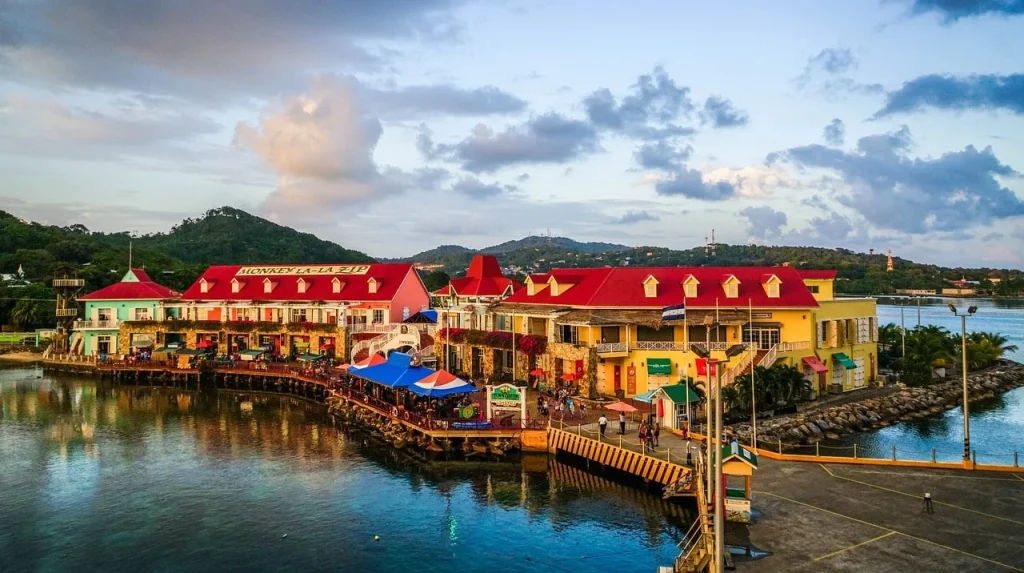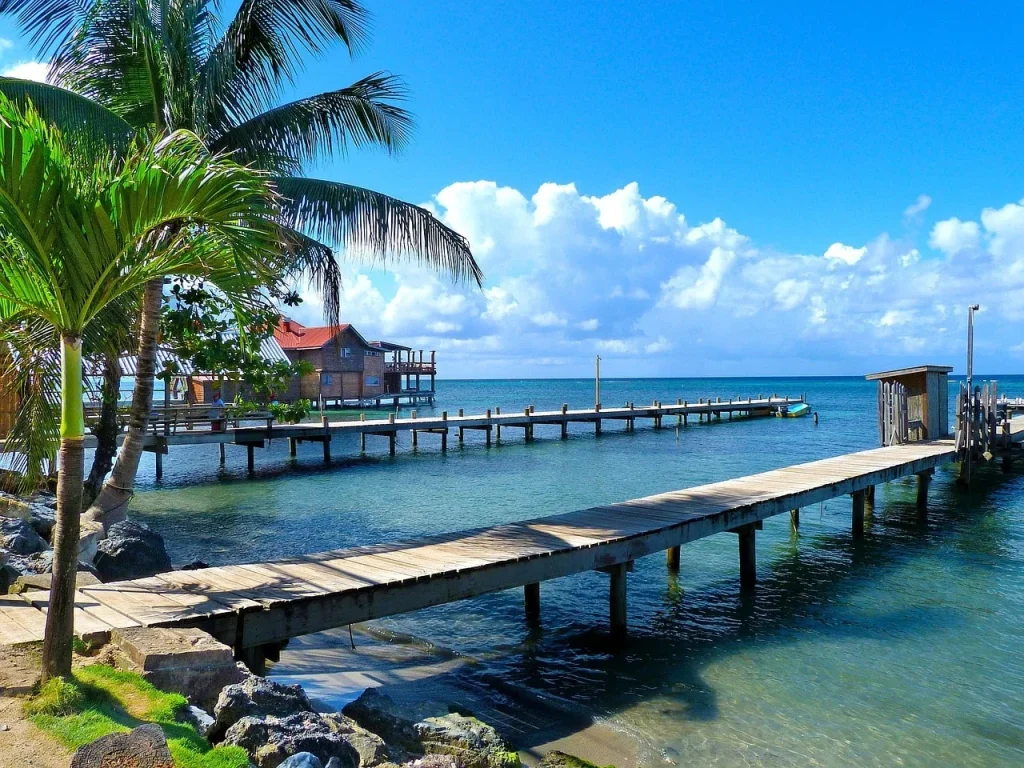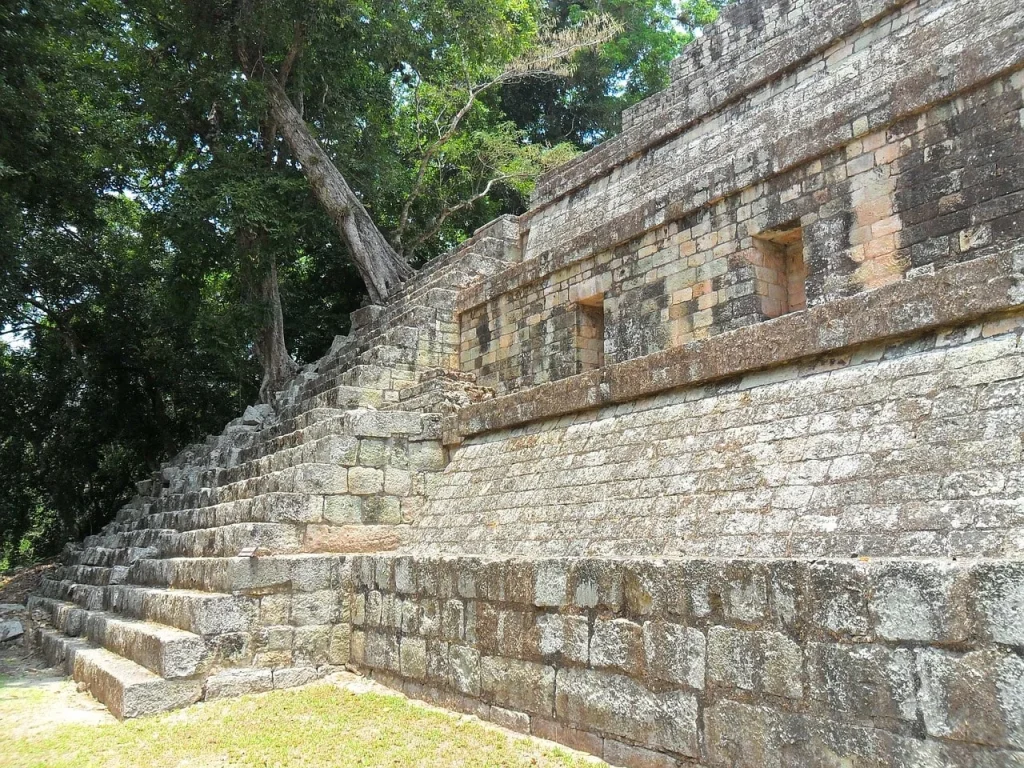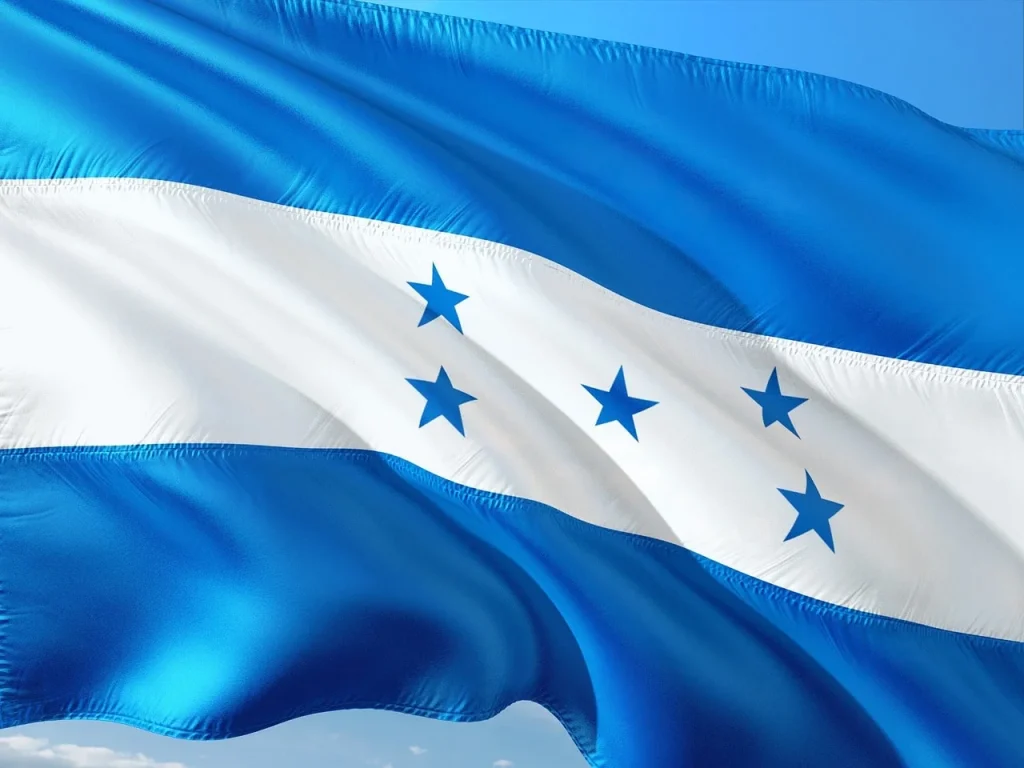What comes to mind when you think of Honduras? Perhaps it’s the image of pristine beaches or the taste of exotic fruits. Honduras, a vibrant country in Central America, is full of surprises and hidden gems.
In this blog, we’re unveiling some interesting facts that reveal the true essence of Honduras. You’ll discover everything from its colonial cities and natural reserves to the warm, welcoming nature of its people.
Honduras is a beautiful country with an extraordinary history and a talented, generous people.
Hillary Clinton
Honduras Facts
Discover the rich tapestry of Honduras with these fascinating facts! Read carefully, as there’s a quiz at the end to test your expertise.
- La Mosquitia rainforest, also known as the “Little Amazon,” covers about 20% of the country and is one of the most biodiverse areas in the world.
- In the town of Yoro, it rains fish once or twice a year, a phenomenon known as “Lluvia de Peces.”
- Copán Ruinas is home to an ancient Maya civilization’s capital, renowned for its intricate stelae and hieroglyphic stairway.
- The island of Roatán hosts the second-largest barrier reef in the world, making it a top destination for divers.
- Garifuna culture, with its unique language, music, and dance, thrives along the Caribbean coast.
- In the Río Plátano Biosphere Reserve, hundreds of uncontacted indigenous tribes live, preserving ancient ways of life.
- The Lost City of the Monkey God was discovered in the Honduran jungle, rumored to be filled with ancient treasures.
- Lake Yojoa is the largest natural lake, surrounded by coffee plantations, mountains, and a rich variety of bird species.
- The country is the leading producer of tilapia fish in Latin America, exporting vast quantities worldwide.
- Platano Forest is a UNESCO World Heritage site, protecting rare wildlife and ancient petroglyphs.
- The capital, Tegucigalpa, sits in a highland valley surrounded by mountain ranges.
- Punta Gorda on Roatán Island is the oldest Garifuna settlement, established in 1797.
- The indigenous Lenca people are known for their pottery and traditional handicrafts.

- Olancho is the largest department, often referred to as the “Wild West” for its rugged terrain and cowboy culture.
- The Biosphere Reserve of Río Plátano contains more than 2,000 species of plants and animals.
- In Gracias, you can find one of the oldest colonial towns, once the capital of Spanish Central America.
- The national bird is the scarlet macaw, a vibrant species native to the tropical rainforests.
- Pico Bonito National Park offers lush forests, waterfalls, and a diverse range of wildlife.
- It is one of the few countries where you can find jaguar populations in the wild.
- Las Cuevas de Talgua, also known as the Cave of the Glowing Skulls, contain ancient human remains with naturally phosphorescent bones.
- The economy heavily depends on banana and coffee exports, dating back to the early 20th century.
- The Honduran Emerald is the only bird species endemic to the country, found in dry forests and thorn scrub.
- Utila is a small island famous for its whale shark sightings and affordable scuba diving certifications.
- Cayos Cochinos, a group of small islands, are a marine protected area known for their stunning coral reefs.
- The Lenca Trail takes you through picturesque villages, highlighting the indigenous culture and traditions.
- El Paraíso department produces some of the finest cigars in the world, rivaling those from Cuba.
- The Bay Islands were once a haven for pirates, including the infamous Henry Morgan.
- El Tigre Island in the Gulf of Fonseca offers volcanic landscapes and unique coastal ecosystems.

- Marcala region is renowned for its high-quality, organic coffee production.
- Comayagua houses one of the oldest clocks in the Americas, dating back to the 12th century.
- The Mesoamerican Barrier Reef along the coast is the second-largest coral reef system in the world.
- Tela is famous for its beautiful beaches and the Lancetilla Botanical Garden, one of the largest tropical botanical gardens in the world.
- Isla del Tigre was a strategic point for the Spanish during the colonial era, with remnants of old fortifications.
- The Cusuco National Park is a critically endangered cloud forest, home to many endemic species.
- Santa Bárbara Mountain is the highest peak, offering challenging hikes and breathtaking views.
- The Río Cangrejal is a top spot for white-water rafting and kayaking, surrounded by tropical scenery.
- The Río Ulúa valley was a major trade and cultural exchange center for ancient civilizations.
- Ahuas is a remote area accessible only by boat or plane, showcasing untouched natural beauty.

- The Cacao plantations produce some of the finest chocolate, thanks to the favorable climate and rich soil.
- The town of La Esperanza is known for its colorful markets and traditional festivals.
- The Santa Bárbara Mountain Range is a key area for biodiversity, including rare and endangered species.
- La Tigra National Park was the country’s first national park, established to protect cloud forest ecosystems.
- The Trujillo port was the first settlement by Spanish conquistadors on the mainland of the Americas.
- The town of Choluteca is one of the hottest places in the country, with temperatures often exceeding 100°F.
- The Cangrejal River offers some of the best whitewater rafting in Central America.
- The Río Plátano reserve is a critical habitat for manatees and other endangered species.
- The Mayan city of Copán features an elaborate ball court used for the ancient Mesoamerican ballgame.
- The city of San Pedro Sula is a major industrial hub, known as the economic capital of the country.
- The Pulhapanzak Waterfall is one of the tallest in Central America, offering opportunities for zip-lining and cave exploration.
- El Cajón Dam is one of the largest hydroelectric projects in the region, significantly contributing to the nation’s power supply.
Honduras Myths

You’ve learned the facts; now let’s bust some myths about Honduras. We’ll separate the truth from fiction in the following section.
- Honduras Is Entirely Unsafe for Travelers
While Honduras has areas with high crime rates, many regions are safe and frequented by tourists. Places like Roatán, Copán, and Utila are popular, offering rich experiences in culture and natural beauty. Always check travel advisories and use common sense safety practices. - Honduran Cuisine Is Just Like Mexican Food
Honduran cuisine has its unique flavors and dishes, distinct from Mexican food. It features staples like baleadas, fried fish, and anafres (black bean and cheese dip). Corn, beans, and tropical fruits also play significant roles in their culinary tradition. - There Is Little Cultural Diversity in Honduras
Honduras boasts a diverse cultural tapestry, including Indigenous peoples like the Lenca and Miskito, Afro-Hondurans, and Garifunas, each contributing unique traditions and languages. This diversity enriches the country’s music, dance, and festivals. - Honduras Has Little to Offer in Terms of Natural Attractions
Honduras is home to stunning natural attractions, from the Mesoamerican Barrier Reef, the second-largest in the world, to the lush rainforests of Pico Bonito National Park. It’s a haven for eco-tourists and adventure seekers alike. - English Is Widely Spoken Throughout Honduras
Spanish is the dominant language in Honduras. While English is spoken in tourist areas and the Bay Islands, it’s less common elsewhere. Learning basic Spanish phrases can enhance your travel experience and help you connect with locals.
Honduras Quotes

Let’s continue with some quotes. This is the list of my favorite ones and you can share more in the comments and I will add them.
In Honduras, the people are as warm as the tropical sun.
Anastasio Somoza García
Anastasio Somoza García, the former President of Nicaragua, described the welcoming nature of Honduran people. His perspective underscores the friendly, hospitable character that is often attributed to the citizens of Honduras.
Honduras does not need to be reformed, it needs to be transformed.
Xiomara Castro
Xiomara Castro, the President of Honduras, emphasizes the need for deep and significant change in the country rather than minor reforms. This quote reflects her commitment to major transformation in Honduras’s governance and society.
The Mayan ruins in Copán are the Paris of the ancient world.
George Stuart
Archaeologist George Stuart compares the spectacular Mayan ruins in Copán, Honduras, to Paris, underscoring their immense historical and cultural significance. This analogy highlights the global importance of Honduras’s archaeological sites.
Honduras is a mosaic of natural beauty.
Juan Orlando Hernández
Former President Juan Orlando Hernández celebrated the diverse and rich natural landscapes of Honduras with this remark. It speaks to the country’s scenic variety, from lush forests and mountains to stunning coastlines.
We have learned that change in Honduras must be led by its people, not from the outside.
Oscar Arias
Nobel Laureate Oscar Arias, former President of Costa Rica, remarks on the political dynamics in Honduras, suggesting that genuine change must be domestically driven. His quote reflects his broader views on democracy and self-determination in Latin America.
Honduras FAQ

As we transition from the inspiring quotes about Honduras to the final section of our journey, remember that the FAQ segment is up next. Read carefully, as it will prepare you for the quiz that follows.
- What is the capital of Honduras?
The capital of Honduras is Tegucigalpa. It serves as both the political and administrative center of the country. - What language do people speak in Honduras?
Spanish is the official language of Honduras. Many people also speak English, especially in the business sectors and tourist areas, along with indigenous languages like Garifuna and various Mayan languages. - What currency is used in Honduras?
The currency of Honduras is the Honduran Lempira (HNL). It’s named after an indigenous leader who fought against the Spanish in the 16th century. - What is the climate like in Honduras?
Honduras has a tropical climate, with a wet and dry season. The weather can vary significantly depending on altitude, but generally, it is warm along the coasts and cooler in the mountains. - What are some major tourist attractions in Honduras?
Honduras is home to stunning attractions like the Mayan ruins at Copán, the beautiful Bay Islands which are a haven for scuba divers due to their rich coral reefs, and Pico Bonito National Park, known for its diverse wildlife and hiking opportunities.
Honduras Trivia

Welcome to the Ultimate Honduras Quiz! If you don’t get any questions right, brace yourself—rumor has it you’ll start dreaming only in the Honduran national anthem!
Conlusion
In this article, we’ve taken a journey through the heart of Honduras, uncovering the fascinating facts that make this country so special. From its stunning natural reserves to the rich cultural heritage and spirited local festivals, Honduras offers a little something for everyone.
So, if you’re ever looking for a destination with both beauty and history, Honduras should definitely be on your radar. Till next time, stay curious and explore more. Cheers.


